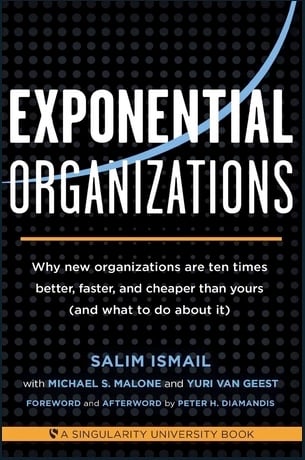Humans know a thing or two about complexity.
You experience it in the dynamics that play out at home, feel it in the relationships you establish in the community and the way you collaborate in the workplace. Even the human body itself is built on a delicate, complex system that defines the way you live and function.
In a world where one cause can lead to multiple effects, scenario planning is the prelude to creating a strategy that could determine your survival.
But who has the time to imagine scenarios when there are urgent matters to take care of?
The truth is— change won’t think twice about what it does to you and your organisation.
With scenario planning, you prepare yourself to respond to change. So by the time, it arrives — demanding remote structures, digital transitions, new business models, or all of the above — you are ready to take action.

It sounds straightforward, but strategic alignment expert, speaker, and author Dr Norman Chorn says that there’s more to it than filling in the blanks between “if” and “then”.
Sitting down with Step Change CEO Ashton Bishop for our LinkedIn Live debut, Dr Norman Chorn offers guidance through Navigating Complexity— a conversation around decision making, scenario planning, and short-sightedness.
In the hour-long broadcast, Ashton and Norman remind us about several scenario planning mistakes that could be misfiring your strategy. They also discuss what you can do to prevent them.
Here's what we learned:
1. Scenario planning is not fortune telling
Scenario planning may not give you the divine power of fortune telling, but it does provide an understanding of the range of possibilities that may occur at some point.
While the possibilities are endless and will vary from industry to industry, spreading yourself thin and dwelling on every single possible outcome will only lead to analysis paralysis.
For scenario planning to be effective, begin by sifting through the critical uncertainties. What will they require from you? What do they have in common? Do you have any blind spots? What capabilities should you start building in order to address those uncertainties should they arrive? From there you’ll have a clearer picture of the most favourable options.
Rather than predicting what you will be doing on the 25th of May 2025, focus on building resilience by enriching your capabilities and fortifying your strengths.
2. A plan is not a strategy
Think of the plan as the steps that will take you to your destination, and the strategy as the overarching philosophy that coordinates your movements.
Time, dollars, and energy are scarce resources— and strategy makes sure that you use them for maximum leverage. But first, you need to be clear on the context surrounding you.
You may have reviewed strategy papers or taken the time to put together SWOT analyses without agreeing on the context. The problem is that by the time you’ve spent your resources and built all sorts of capabilities, the context could have changed without you knowing. Not until the cost of a poorly implemented plan—with the unmistakable red pen and negative numbers— is staring at you in the face.
So it’s not enough to plan. You need a solid strategy built on the relevant context for you to reap the targeted results.
Complexity calls for reflection. Before you decide on the steps, begin your scenario planning by identifying the context first and what it implies. This will help you to decide which possibilities are worth taking.
3. Focus on what you can influence now
Humans strive to make sense of a consistently inconsistent world.
There is no way to completely balance out and control all the possibilities, but scenario planning gives you the opportunity to create an action plan and build capabilities for the critical situations that could affect you.
So don’t get anxious about the amount of attention, focus, and resources you’re spending on one plan just because you’re not doing the same for another. The world isn’t as balanced as we’d like it to be, and strategy is about choices. It also looks into what you deliberately choose to not do as much as it is about what you choose to do.
This sense of certainty lasts only to a point. So as you’re thinking ahead, make sure you’re also doing something now to get there.
In the post-COVID world, the timeframes have gone shorter. This means that at some point, within the scenario planning, you need to make a decision, and start acting on it quickly.
4. Check your narratives
Even the most favourable outcomes can be shut down by a single narrative.
These internally consistent stories usually have very strong moral overlays. As a community-based belief system and a key in decision making, the narrative is a powerful element that borders on the dangerous depending on what the creator wants you to believe.
Some people believe:
-
- Restrictive narratives — focusing on blame, conspiracy, and hate rather than a solution
- Active narratives — known to address current issues as they arise
- Transformative narratives — groundbreaking, revolutionary ideas that challenge the way we think and live
It’s worth checking which narrative you choose because being attached to the wrong one will cost you opportunities and resources. For example, your view on mandatory masks, border restrictions, social distancing, vaccines, and remote work depends on which COVID narrative you believe.
In scenario planning, narratives have the power to define the problem. They alter the context from which your strategy arises and therefore influence the proposed actions.
Some questioning and acceptance of contradictions are welcome because the last thing you want to do is watch the future unfold through the lens of an unreliable narrator. So be critical of the metrics and sources that inform your strategy.
4. Lean into the process
It’s tempting to backtrack and go back to first principles at the first whiff of uncertainty.
But there is value in being prepared to re-evaluate your own beliefs on the basis of new information.
The universe is constantly expanding. Plans are made, altered, and scrapped on a daily basis. All these changes will influence the strategy and determine the play.
The biggest screw-ups in business, military and political history is the application of previously proven practice to a changed context. What is seen as rising to the occasion in some situations may actually be a glaring red flag for another.
What better time to be creative, now that you’re already moving into the future? From complexity comes creativity and scenario planning is your opportunity to explore not only possible outcomes but possible capabilities and strengths. The longer it takes you to act, the more restricted your options are going to be.
Lean into the process by asking questions, involving others, taking the time to listen and testing the waters, and it could very well lead you to the best practice you’re looking for.
With these in mind, navigating complexity becomes an opportunity to not only manage change but lead it. More than just imagining possible workarounds for hypothetical scenarios, this is your chance to make the most of any opportunity and buffer the pain of whatever challenge that may arise.
Catch up on Navigating Complexity with Dr Norman Chorn and Ashton today.
Watch the full video below:
















